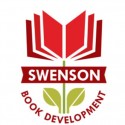 Publishing is a business. Books are products. When you want to publish your book you need to understand that you are introducing a new product into a crowded market with decreasing demand. The number of books published each year has exploded. The average number of sales for each book continues to decline, despite the increasing number of titles published.
Publishing is a business. Books are products. When you want to publish your book you need to understand that you are introducing a new product into a crowded market with decreasing demand. The number of books published each year has exploded. The average number of sales for each book continues to decline, despite the increasing number of titles published.
For every spot available in bookstore shelf space, there are close to 1,000 titles competing for that space. For example, the number of titles stocked in any bookstore in the section where your book might belong is likely between 100 (independent bookstores) and 1,500 (Barnes & Noble superstores), yet there are hundreds of thousands of books in print which fight for that limited shelf space. You’re not only competing against other new products in the market, but against all the other books in your niche which have previously been published.

Selling books has also changed for the publishing industry. The same effort to bring a book to market today as ten years ago will yield a fraction of the sales previously experienced by authors. The intellectual real estate market has never recovered from the 2008-2009 Great Recession. Publishers have shifted their acquisition strategy to sign fewer books with expectations for higher volume sales. In other words, they are looking for blockbusters and this means many great books are passed over.
Changes in the market also mean authors can expect lower advances, or no advance. Publishers pay an advance on copyright royalties. From the advance, you can estimate how many books they will print and how many copies they think they can sell with a 1 percent profit margin. Copyright royalties are typically 5 percent of net sales receipts. A thousand dollar advance is a bet they can sell 1K copies of your book and that’s the size of the first print run. To attract a publisher who is legitimate, you need a business plan. To attract a publisher who can help you sell 10,000 copies, you need to demonstrate you can bring at least that many readers to them and turn them into customers of your product.

Identifying your audience is important. Who are your readers? Be specific. Create your customer personas. Who are the people who don’t already know you and will want to buy your book? What are their needs? What expectations will they bring to a book like yours?
 When you write a book proposal, it’s a business proposition. If you can’t demonstrate to a publisher that you have a new product which will sell, then don’t hold your breath waiting for a contract offer.
When you write a book proposal, it’s a business proposition. If you can’t demonstrate to a publisher that you have a new product which will sell, then don’t hold your breath waiting for a contract offer.
Do you need help writing your book proposal? Contact Swenson Book Development.
